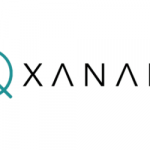Quantum News Briefs January 17: China will win quantum computing race unless West ups its game; Dario Gil: Why IBM is no longer interested in breaking patent records–and how it plans to measure innovation in the age of open source & quantum computing; & Israel’s quantum leap to a “Startup Nation”

Quantum News Briefs January 17
China will win quantum computing race unless West ups its game – Nikkei Asia
Rob Jesudason is chief executive and founding partner of Serendipity Capital, an investment group based in Singapore. Quantum News Briefs summarizes his recent article in Nikkei Asia urging the West to “up its game against China in quantum computing.”
Jesudason warns, “The West and its allies need to apply a sense of international urgency to technology contests, where falling behind could have far greater consequences here on Earth.”
No one can afford to lose this race. Already, the U.S. and its allies are competing with China to be the first to make the delicate, complex and error-prone quantum machines viable. But this is a contest between systems, not just scientists. It pits the West’s decentralized, private sector-driven approach to technology innovation against China’s government-led agenda, which has much greater capacity to co-opt private companies and direct their priorities. That is why the West and its allies need a new approach to catalyzing investment, connecting the best talent and coordinating efforts. Put simply, they need to apply a space race mentality to the field of quantum physics.The Western model for developing quantum computing is vibrant, and many aspects of the system work well. More and more companies are being spun out of the physics departments of leading universities, backed by a growing number of specialist venture capital funds and operating in ecosystems that benefit from government support. Promising partnerships between governments, the private sector and academia are springing up among the U.S. and its allies.
The West has been leading, but it cannot be complacent. China already has a satellite featuring a secure method of quantum messaging that has brought the country closer to creating an unhackable global communications system.
Theory aside, money is where the race between quantum technologies is most critical. China is backing up its ambitions with capital. According to consultancy McKinsey & Co., China accounts for half of the nearly $30 billion of public funding that has been allocated globally to quantum computing.
What is needed from the West to counteract that financial firepower is a dramatic jump in policy support and international coordination. Western public investment in quantum technology must be increased if reaching the finish line ahead of China is a priority.
China’s model for capital allocation may not be efficient, but betting against its ability to mobilize resources to address existential priorities would be foolish. If the West wants to win in quantum computing, it has to adopt a Cold War mentality and give the technology a space-race level priority. Click here to read article in-entirety
*****
Dario Gil: Why IBM is no longer interested in breaking patent records–and how it plans to measure innovation in the age of open source & quantum computing
 IBM’s work in quantum computing has been intentionally based on a blend of proprietary and open innovation since day IBM’s quantum hardware has always been developed internally and protected by trade secrets and patents. But in 2016, IBM made the decision to give access to these pioneering quantum computers through the cloud. For the first time ever, quantum computing was no longer the domain of research scientists. Anyone with an internet connection could access the most sophisticated quantum technology in the world. We backed this up by open-sourcing our Qiskit software so developers worldwide could learn how to build quantum applications.This has literally been game-changing. Today, more than 1.5 million people have downloaded the Qiskit software development kit, there are over 450,000 registered IBM Quantum users and researchers have used our technology to write more than 1,700 scientific publications. We’ve worked with academic partners to put quantum computers in Germany and Japan, with more systems to come online in Canada, South Korea, and at the Cleveland Clinic in the U.S.<
IBM’s work in quantum computing has been intentionally based on a blend of proprietary and open innovation since day IBM’s quantum hardware has always been developed internally and protected by trade secrets and patents. But in 2016, IBM made the decision to give access to these pioneering quantum computers through the cloud. For the first time ever, quantum computing was no longer the domain of research scientists. Anyone with an internet connection could access the most sophisticated quantum technology in the world. We backed this up by open-sourcing our Qiskit software so developers worldwide could learn how to build quantum applications.This has literally been game-changing. Today, more than 1.5 million people have downloaded the Qiskit software development kit, there are over 450,000 registered IBM Quantum users and researchers have used our technology to write more than 1,700 scientific publications. We’ve worked with academic partners to put quantum computers in Germany and Japan, with more systems to come online in Canada, South Korea, and at the Cleveland Clinic in the U.S.<
Meanwhile, the IBM Quantum Network stands at more than 200 members, with enterprises from Boeingto HSBC to Mitsubishi.
IBM sees collaboration, not exclusivity, as the best way to advance the technology and build a quantum industry. Innovation is a combination of talent, resources, and how the talent applies those resources. That might involve obtaining a patent, contributing to open source, or creating entirely new markets, like the work we are doing to build a quantum industry. And while you can’t quantify it in terms of patent numbers or even R&D dollars, progress will become obvious as the life-changing applications of these exciting new technologies continue to tick up.
That’s why IBM is betting that you should account for the real-world impact of a given technology–not just how many patents were issued while building it. Click here to read Fortune article in-entirety.
*****
Israel’s quantum leap to a “Startup Nation”
 According to Classiq Technologies co-founder and CEO Nir Minerbi, maintaining Israel’s global status as a “Startup Nation” also requires being a leading and significant player in the field of quantum computing. Quantum News Briefs summarizes Nir’s recent editorial.
According to Classiq Technologies co-founder and CEO Nir Minerbi, maintaining Israel’s global status as a “Startup Nation” also requires being a leading and significant player in the field of quantum computing. Quantum News Briefs summarizes Nir’s recent editorial.
Israel is making a lot of effort to be on par with its government peers in the competition to build quantum computers. The state recently announced that it would invest around NIS 115 million in this field, in addition to the NIS 1.25 billion allocated for the promotion of quantum technology in Israel, a program the state announced in 2019.
Governments and technology giants compete constantly to build quantum computers, realizing that such devices will give them tremendous strategic advantage in the very near future. Israel is also making a lot of effort to be on par with its peers. The state recently announced that it would invest around NIS 115 million in this field, in addition to the NIS 1.25 billion allocated for the promotion of quantum technology in Israel, a program the state announced in 2019.
Israel’s relative expertise could bring it to the front of world efforts and enable a variety of sectors and people to participate in the quantum revolution. In order to achieve its potential, Israel must establish a concrete goal and take various measures to achieve it. In Japan, for example, they set a goal of training no less than ten million software developers for quantum computers by 2030; setting a similar goal on a local scale and allocating dedicated budgets will facilitate the expansion of the academic curricula devoted to the subject. Furthermore, implementing quantum computing will create a new generation of quantum developers.
It is important that the private sector also gets involved and doesn’t miss the train. In order to leverage the quantum technology breakthrough, both high-tech and other industries should mobilize. The world of quantum computing may sound threatening even to a full-fledged software developer, but continued exposure and accessibility to the field will help recruit more experts in the long term.
It is like any technological revolution, those who can board the train when it is accelerating will gain an advantage. Maintaining Israel’s global status as a “Startup Nation” also requires being a leading and significant player in this field. Click here to read Nir’s complete editorial.
*****
Hyperdimensional microlaser chip that communicating via qudits doubles quantum information space of previous on-chip lasers
 A team of researchers, led by Professor Liang Feng’s Lab at the University of Pennsylvania designed and built a hyperdimensional microlaser to emit photons possessing any states within a four-level quantum system consisting of spin angular momentum and orbital angular momentum with very high fidelity. Quantum News Briefs summarizes comprehensive article from Laser Focus World.
A team of researchers, led by Professor Liang Feng’s Lab at the University of Pennsylvania designed and built a hyperdimensional microlaser to emit photons possessing any states within a four-level quantum system consisting of spin angular momentum and orbital angular momentum with very high fidelity. Quantum News Briefs summarizes comprehensive article from Laser Focus World.
This work is a huge leap forward because the team’s microlaser chip can be used as a source in free-space quantum key distribution (QKD) and coherent classical communications, particularly for satellite-to-Earth communications or tower-to-tower communications.
Classical information theory based on binary digits (bits) forms the backbone of modern information processing and communication systems. “Inspired by the achievement in classical information, quantum information processing today is mainly based on quantum bits (qubits), which can process a value of 0 or 1 at the same time—known as ‘superposition’ in quantum mechanics,” says Feng.”
As the ability to control different two-level quantum systems developed, several quantum protocols and algorithms were proposed and deployed, which enabled secure communications and exponential computation speedups.
The team is now focusing on three key areas to improve their microlaser system. Their first step is to integrate more on-chip ring resonators and waveguides to expand the system’s dimensionality. Second, they want to develop an electrical-pumped microlaser—their current device is optically pumped—to control all parameters in a fast, electrical way. The third step is to develop a mature quantum communications system based on their device. Click here to read the complete, in-depth LaserFocusWorld article.
*****
Sandra K. Helsel, Ph.D. has been researching and reporting on frontier technologies since 1990. She has her Ph.D. from the University of Arizona.





















